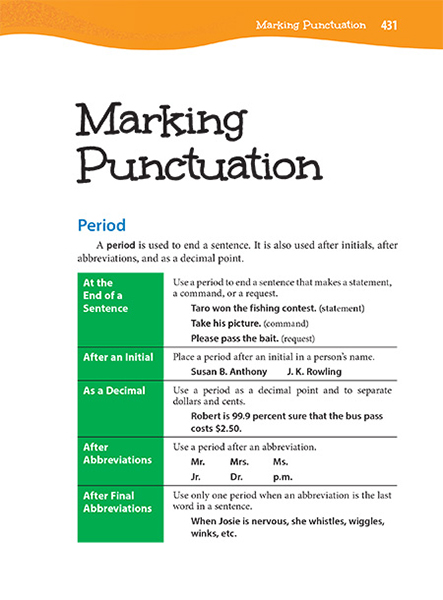Page 431 from

Start-Up Activity
Show your students the following paragraph, without any punctuation:
When days grow shorter leaves change colors the chlorophyll in them breaks down the leaves then show the colors that were there all along other chemical changes create some colors like intense red purple or yellow when they are gone they leave just gray black and brown hues that are not very cheerful until the first buds of spring appear
Ask your students if the lack of punctuation makes the writing hard to read. Then have them suggest places where commas and periods should be added.
Think About It
"To me, part of the beauty of a comma is that it offers a rest, like one in music: a break that gives the whole piece of music greater shape, deeper harmony. It allows us to catch our breath."
—Pico Iyer

Start-Up Activity
Show your students the following paragraph, without any punctuation:
When days grow shorter leaves change colors the chlorophyll in them breaks down the leaves then show the colors that were there all along other chemical changes create some colors like intense red purple or yellow when they are gone they leave just gray black and brown hues that are not very cheerful until the first buds of spring appear
Ask your students if the lack of punctuation makes the writing hard to read. Then have them suggest places where commas and periods should be added.
Think About It
"To me, part of the beauty of a comma is that it offers a rest, like one in music: a break that gives the whole piece of music greater shape, deeper harmony. It allows us to catch our breath."
—Pico Iyer










